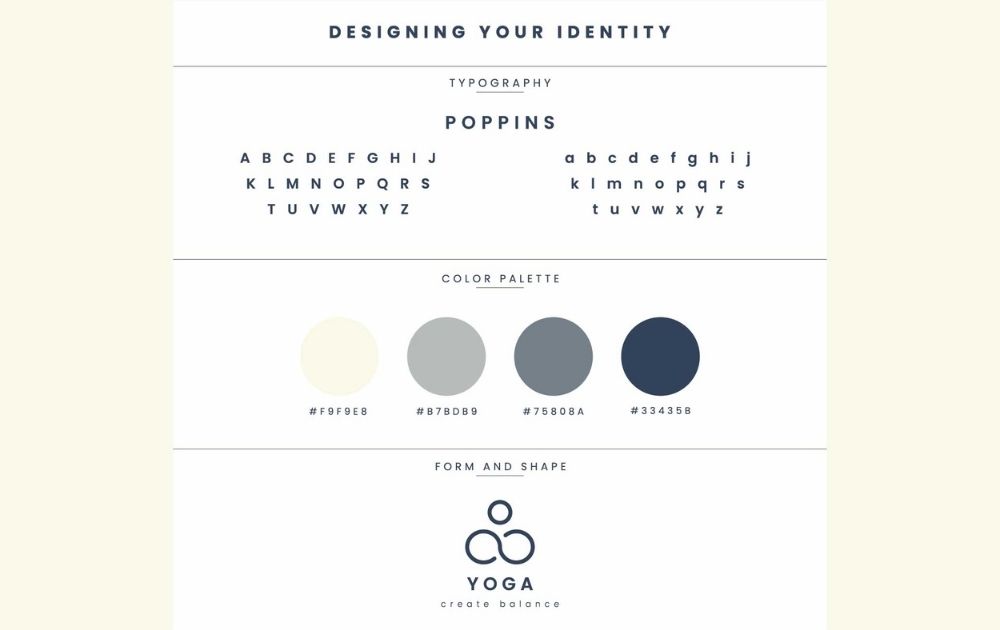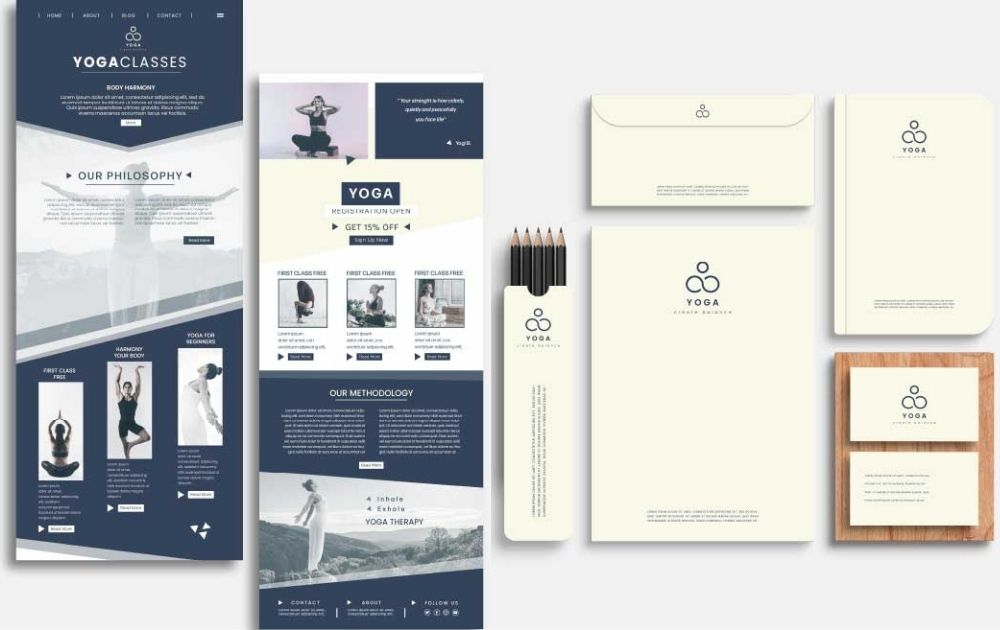
What’s the first thing that comes to mind when you hear golden arches? For many, it’s fries, burgers, and ice cream sundaes – it’s McDonald’s. That, right there, is a stellar example of a successful brand identity.
With two simple words, a picture of the company comes to mind. Other awesome brand identity examples include Starbucks’ green mermaid, Twitter’s bird icon, and Google’s letter G. For instance, many of our clients here at Penji ask us to design the perfect icon that encapsulates who they are and what they can do for customers.
That said, brand identity goes beyond a simple logo. In fact, it’s a collection of concepts, slogans, mottos, and visuals that make a company unique. And just like our own personal identity, finding a corporate identity involves knowing oneself through a phase of trial and error.
Brand Identity vs. Brand Image
A brand identity is a controlled image of the company. It is the personality, values, and representation of a business rolled in one. Just like personal identity, brand identity establishes what makes a firm distinct from all the others.
So, how does one come up with a solid brand identity? You can start with a specific set of design choices and strategies curated by a team that puts careful thought into the company. That being said, the following usually make up brand identity:
- Brand name
- Logo design
- Use of color, font, and other visual elements
- The language used in public
- Interaction with consumers
Brand image, on the other hand, is the interpretation of consumers of your company. Regardless of how you control your identity, the image is the customer’s perception of you.
How to Establish Brand Identity

So how does one design a brand?
Firstly, it must be divided into two aspects: the theoretical concept and the design. Design elements are mostly physical things that you can see, such as typography, colors, and shapes of visual materials.
Meanwhile, the conceptual aspects of a brand are its core values and philosophies. These aspects impact and dictate the physical appearance of a brand.
Below are some brand identity guidelines to get you started.
Know Your Brand
Before setting out to create the elements, you must look inward. You can do this by answering questions about the soul and core of your brand. In this stage, it’s best to identify the following:
- Company mission and vision (Why does your brand exist?)
- Company values (What are your company’s core beliefs?)
- Brand personality (Is your brand serious, playful, or witty?)
- Brand voice (How will you translate your personality through your marketing voice?)
You can ask yourself why you built your business in the first place. Who are you selling to? What makes your business different from others? And how would you describe your brand in three words or less?
Designing your identity

As for the physical elements of identity, a set number of assets helps. These can be anything from your logo, the packaging, web design, social media publicity materials, and your employees’ uniforms. Here are some of the basic factors that a brand designer would consider when defining one’s business identity.
Typography
This refers to the font style and types that you choose to represent your brand. Depending on your business, there are several font styles to choose from:
- serif (Times New Roman, Garamond, etc.)
- sans serif (Arial, Helvetica, etc.)
- script (Allura, Pacifico, etc.)
- display fonts
Fonts tend to appear in a wide variety of publicity materials. Because of this, businesses must choose fonts wisely as this will show up a great deal of ads.
Color Palette
Next, colors have a known psychological effect on consumers. They tend to evoke certain emotions in people. That means that color choice will often depend on your line of business. Regardless, color palettes tend to be quite important.
Red, for instance, is a strong, bold color that evokes hunger from consumers. Hence, fast food chains like McDonald’s and KFC use red in their branding.
Meanwhile, universally appealing colors like blue and green have more versatile uses. They can be used to express stability and trustworthiness in a business. Because of their wide appeal, a majority of companies tend to favor these colors.
Finally, neutral colors like brown and black tend to be used by understated and more masculine learning companies. Black screams sophistication, so many high end brands use this for their promotions.
Form and Shape
Shapes matter a lot when it comes to assets for your brand identity. Like colors and typography, they give a visual impression of who the brand is for.
Straight-edged shapes like squares, rectangles, and triangles evoke a more rigid structure. It shows stable and calculated leadership. If you play these up with less serious colors and shapes, your brand can appear cheerful but efficient.
Meanwhile, shapes with rounded edges tend to show warmth and comfort. In fact, they are often seen as more feminine and approachable. Because of this, these shapes are more likely to be used in industries that prioritize care, unity, and cooperation.
How to Apply Your Brand Identity

The applications of a company’s identity are quite comprehensive. In many cases, design concepts and guidelines are used on the following:
- Logo
- Website
- Email design
- Business cards
- Product packaging
The key to ensuring a successful brand identity is repetition and exposure. Consistency of how a business presents itself gives more chances of people taking notice of you.
To ensure consistency, most companies have a style guide. These contain the colors, font styles, and other visual assets graphic designers can use for creating marketing materials.
The Bottomline
Brand identity is one of the ways your consumers can connect with you. Nowadays, image is just as important as products or services. Because of this, crafting your identity is a worthy investment for any business that wants to actively seek out and understand its customers.
As a result, your company becomes memorable. This, in turn, helps your business connect more to consumers, driving up profits and sales.
Need branding assets to reflect your unique brand identity? Leave the design heavy-lifting to Penji. We have the top two percent of designers, and we know just the right approach to take your brand closer to your audience.
And because we offer unlimited graphic design at a flat monthly cost, you won’t have to spend an arm and a leg. Sign up by clicking this link to get 15 percent off the first month of any plan.
About the author

Carla Deña
Carla is a journalist and content writer who produces stories for both digital and legacy media. She is passionate about creativity, innovation, and helping small businesses explore solutions that drive growth and social impact.








